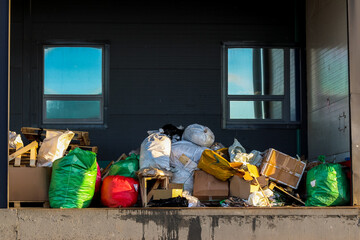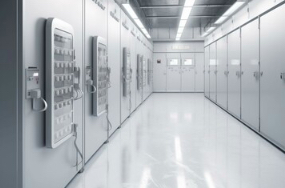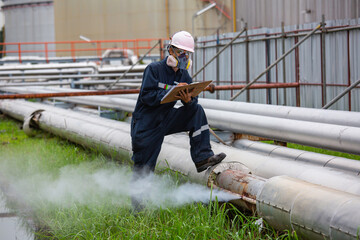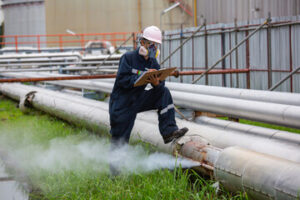Junk Removal Louisville KY hauls away anything that can’t be recycled. This includes everything from old furniture and appliances to electronics, yard waste, and construction debris.
Junk removal companies often charge a flat rate to remove junk, but some have additional fees for specific items. They may also sort things for donation or recycling.
Recycling is a great way to reduce junk removal, and it can also help you become more environmentally friendly. By recycling and upcycling, you can extend the life of materials, conserve natural resources, and lower the demand for new products. You can also reduce the amount of trash that ends up in landfills, which can take thousands of years to decompose and pollute the environment. Additionally, recycling and upcycling create jobs in the waste management industry. This includes the jobs of recycling truck drivers, waste removal specialists, and waste processing professionals.
Most junk removal services have a sustainable approach to waste management, and they offer a variety of eco-friendly options for their customers. Some of these include sorting, recycling, and even turning waste into energy. These methods can greatly reduce the impact of junk on the environment and make a positive impact on your community. They can also improve the appearance of your home or business, making it more appealing to buyers.
Aside from recycling, you can donate your unwanted items to charity organizations and thrift stores. This helps those in need and diverts materials from landfills. You can also turn your organic waste into compost, which will save space in the garbage dump and help reduce the amount of toxic substances in the environment.
In addition to reducing the amount of waste that is sent to landfills, these sustainable approaches can also cut down on greenhouse gas emissions. This is because the burning of materials in landfills and incinerators releases harmful chemicals into the atmosphere, which contribute to global warming.
Many people don’t realize that a large portion of their junk can be recycled or reused in some way. For example, a wooden door can be used to build a shed or garden bench, and old electronics can be refurbished and reused.
Some items, such as batteries, paint chemicals, and electronic devices, contain hazardous materials that require special disposal. You should research the proper methods for disposing of these items and never put them in your regular trash or pour them down drains.
Donation
If you’ve accumulated unwanted items that you feel don’t belong in your house, you might want to consider donating them instead of throwing them away. This is a great way to clear out your clutter and give back to the community. It’s also a good idea to check with local donation centers to see what they’re in need of at the time. This will ensure that your donated items go to a worthy cause and aren’t just dumped in a landfill.
Junk removal specialists can help you get rid of unwanted items by donating them or recycling them. They have access to large trucks that can handle bulky junk, making it easy for you to get rid of your unwanted items without a hassle. Junk removal companies can also provide you with a quote for your junk removal needs, so you can budget accordingly.
In addition to helping the environment, donating your items can also be a great way to get a tax break. If you’re planning to donate your unwanted items, make sure you keep the receipts so that you can claim them at tax time. Keeping track of all your donations can be a pain, but hiring a junk removal company to take care of the process for you can be helpful.
Cluttered spaces equate to cluttered minds, so it’s important to clean regularly to stay organized and reduce the amount of junk in your home. By donating your old furniture and unwanted items to charity, you can create more space in your home and live a healthier lifestyle. This will also motivate you to maintain a regular cleaning routine.
If you have items that are in a usable condition, you can hold a yard sale or bring them to a local thrift store or donation center. However, if the items are not in a usable condition, it’s best to hire a junk removal company. They’ll sort through your junk and determine what can be used or recycled, so that it doesn’t end up in a landfill. They’ll also help you recycle your electronics, which are often made from toxic materials and don’t belong in the trash.
Environment
Junk removal companies are increasingly recognizing the importance of environmental sustainability in their business practices. They are adopting eco-friendly methods and promoting waste reduction, focusing on sorting items for recycling and repurposing. This reduces the need for raw materials and helps save on energy costs. Additionally, they are using eco-friendly packaging for their services, minimizing the environmental impact of their waste disposal.
Traditional junk removal methods can have harmful effects on the environment, contaminating water and soil with toxic chemicals. These contaminants can also affect human health, causing disease and even death. Moreover, these chemicals may also be leaked into the atmosphere, further damaging the earth and harming living organisms. These issues make it vital for people to explore alternatives that promote sustainability in their daily activities.
Many items can be recycled, including furniture, electronics, and clothes. These items can be donated to local charities and reused, thereby reducing waste. Junk removal companies can also provide creative ways to recycle and repurpose items, ensuring that less junk ends up in landfills. This is an effective way to support a greener world.
Sustainable junk removal practices can help improve indoor air quality, making your home or workplace a healthier place to live and work. However, the process requires careful planning and execution to prevent harmful consequences. Some common risks include sharp objects, dangerous materials, and contaminated food. A professional junk removal company will minimize these hazards by using environmentally friendly methods of waste disposal and implementing proper safety precautions.
Sustainability is a key element in junk removal and should be included in the core values of any company. The concept of sustainability encourages individuals to meet their needs without compromising the ability of future generations to access resources. The most successful companies are those that have a long-term vision of sustainability and focus on building a positive relationship with their employees, customers, community, and the environment.
Many traditional junk removal companies dump all their waste in a landfill, contributing to the 9.5 million tons of reusable material that are sent to landfills each year. This waste pollutes the surrounding water, soil, and air and produces greenhouse gases that destroy the ozone layer. It is therefore important to find a junk removal service that prioritizes recycling and other environmentally responsible practices.
Safety
Whether you’re dealing with junk in your home or business, safety should be a top priority. Ensure that all potential hazards are addressed before beginning the junk removal process. This includes securing loose items and removing any obstacles that might pose a risk to workers. Also, make sure that your workers are equipped with the necessary tools and equipment to complete the job. This may include gloves, hard hats, safety glasses, and dust masks.
Before you hire a junk removal company, learn more about their services and how they handle hazardous materials. Find out what types of materials they accept and how they recycle to minimize their impact on the environment. In addition, you should know the rates for each type of waste and how they affect your final bill. You should also ask about their environmental policies and any local or state laws that require them to dispose of certain items in a particular way.
If you’re working with heavy items, it’s important to focus on lifting safety. Using dollies or hand trucks can reduce the strain on your body and minimize injuries. It’s also important to remember to bend your knees and keep the item close to your body to avoid back injuries. In addition, you should consider using a harness or rope to help you move heavier items.
Junk removal is a competitive industry, so it’s crucial to have the right insurance coverage. In addition to general liability, you should consider commercial auto and workers’ compensation insurance. These insurance policies can protect you from any legal ramifications that may arise during the junk removal process.
It’s also essential to evaluate the condition of the junk you’re removing before hiring a junk removal company. For example, old paint cans or chemicals can be hazardous to human health and should be disposed of properly. You should also check if your junk removal company accepts electronics and appliances, which are often repurposed or recycled rather than thrown away.
Junk removal can be a messy and dangerous task, but it’s essential to take the necessary precautions to ensure the safety of yourself, your family, and your employees. Taking these measures can save you money, time, and hassle in the long run.



